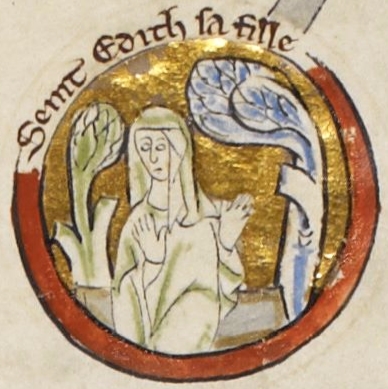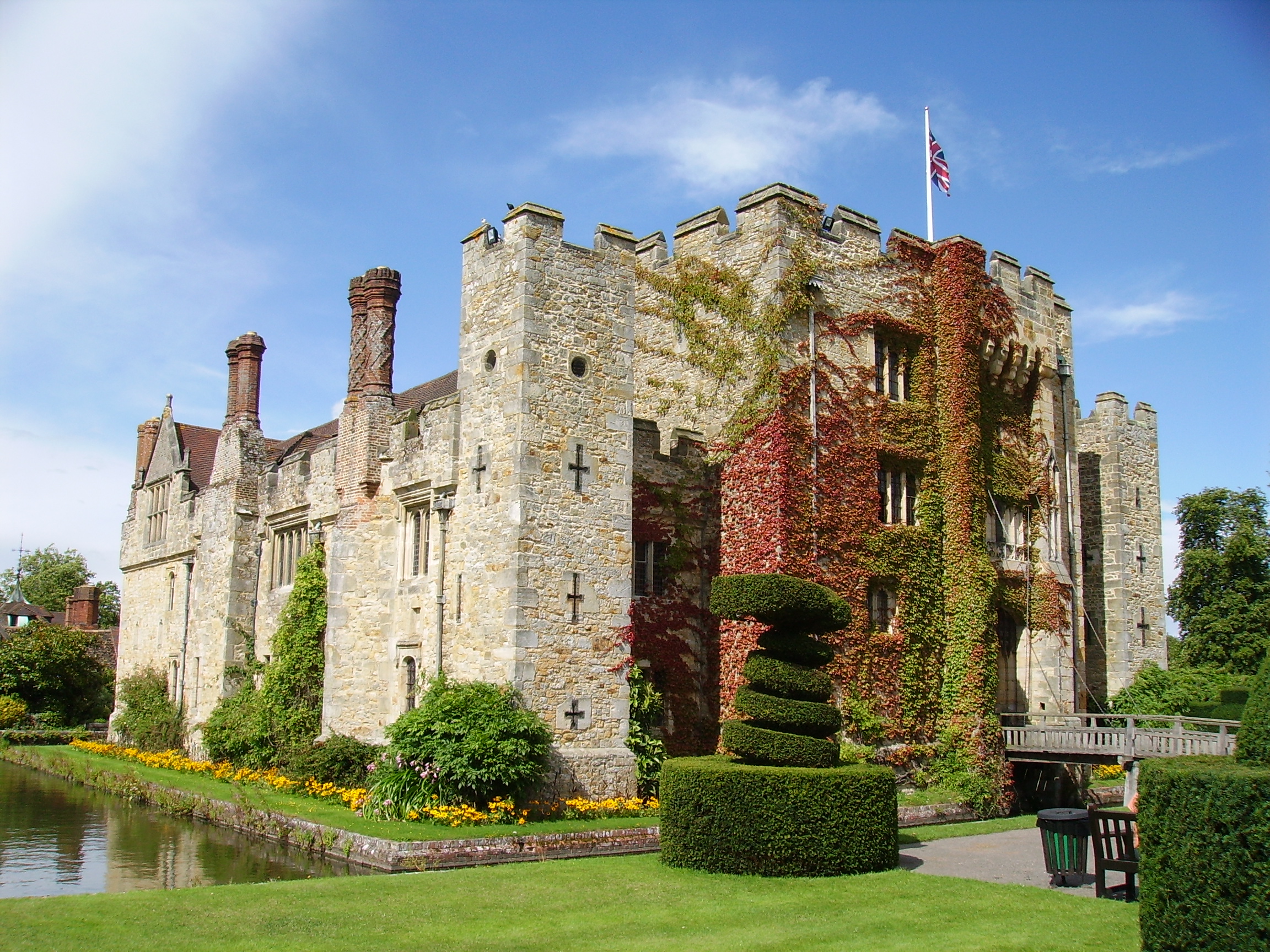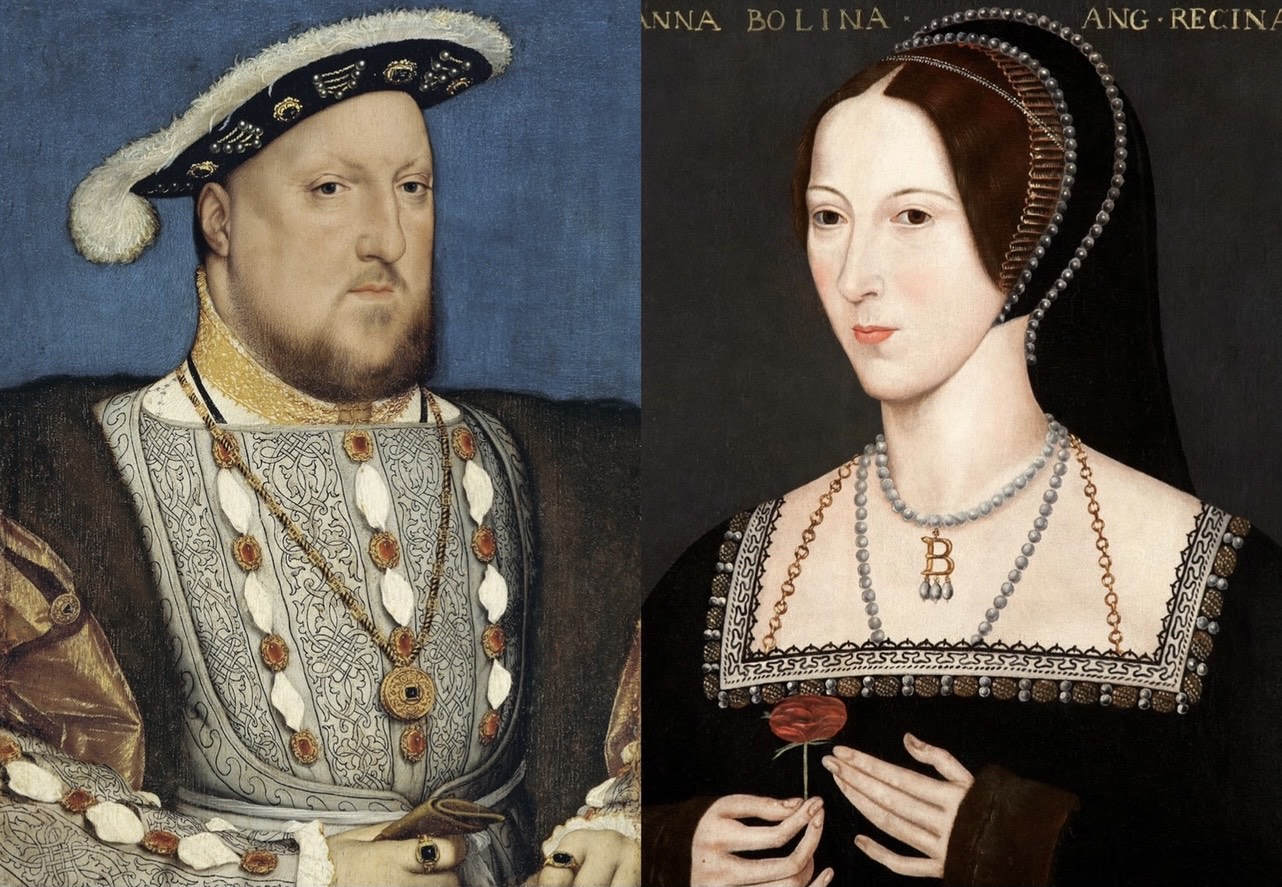|
Kemsing
Kemsing is a village and civil parish in the Sevenoaks district of Kent, England. The parish lies on the scarp face of the North Downs, 20 miles south east of Central London, north east of Sevenoaks. Also in the parish are the hamlets of Heaverham, to the east, and Noah's Ark to the south. The population of the civil parish in 2001 was 4,014 persons, increasing to a population of 4,218 at the 2011 Census. History Kemsing was the birthplace, in between AD 961 and 964, of Saint Edith of Wilton, a daughter of the Anglo-Saxon King Edgar I. The well at the centre of the village is dedicated to her, a plaque on the wall recording the local legend that her saintly presence has given the water healing properties. Given the village connection with St. Edith it is perhaps surprising that the parish church, Saxon in origin, is however dedicated to St Mary the Virgin. Another local legend states that the knights who murdered Archbishop Thomas Becket rode through Kemsing on their w ... [...More Info...] [...Related Items...] OR: [Wikipedia] [Google] [Baidu] |
Kemsing Railway Station
Kemsing railway station serves Kemsing in Kent, England, although the station is located on the other side of the M26 motorway to the village. It is down the line from . Train services are provided by Southeastern. History Kemsing station opened on 1 June 1874, as part of the Maidstone Line from to Maidstone The goods yard had six sidings, one of which served a goods shed. Freight facilities were withdrawn on 31 October 1960. The signal box closed on 30 September 1964. The station has been unstaffed since 8 February 1985. The station buildings were demolished after the station became unstaffed. A PERTIS 'permit to travel' machine, located outside the station at road level on the 'up' side, suffices. Facilities Kemsing station is unstaffed although there is a self-service ticket machine available for ticket purchases. Both platforms have shelters, information screens and modern help points. There is a small car park at the station entrance and local buses to Sevenoaks s ... [...More Info...] [...Related Items...] OR: [Wikipedia] [Google] [Baidu] |
Sevenoaks (UK Parliament Constituency)
Sevenoaks is a constituency represented in the House of Commons of the UK Parliament since 2019 by Laura Trott, a Conservative. History This constituency has existed since the Redistribution of Seats Act 1885. With the exception of the one-year Parliament in 1923, the constituency has to date been a Conservative stronghold. ;1885–1950 Sir Thomas Jewell Bennett before entering Parliament was a leader writer at ''The Standard'' and lived in India for many years, working at the ''Bombay Gazette'' before becoming both editor and principal proprietor of the ''Times of India''. Bennett returned to England in 1901 and in 1910 unsuccessfully contested his first Parliamentary election, losing to Alfred Gelder at the time of David Lloyd George and H. H. Asquith's celebrated "People's Budget". He represented the seat for five years from 1918. Higher in government in this period was Hilton Young, the Health Secretary between 1931 and 1935. The health portfolio at the time includ ... [...More Info...] [...Related Items...] OR: [Wikipedia] [Google] [Baidu] |
Godfrey Pinkerton
Godfrey Pinkerton (1858 – 1937) was a London-based British architect. Biography Early life Pinkerton was born at Godstone, Surrey, son of metal broker George Pinkerton (1823 – 1899), son of the missionary and linguist Rev. Robert Pinkerton, DD- and Mary (née Easum; 1823-1868). His siblings included the poet and translator Percy Edward Pinkerton. Career He attended the Liverpool School of Art and was articled to H & H P Fry of Liverpool from 1875 to 1879 and remained as assistant. He was assistant to Henry Saxon Snell from 1880, and started his own practice in London from 1884. He was appointed a Fellow of the Royal Institution of British Architects (FRIBA) in 1908 and operated from offices at 39 St Andrew's Square in Surbiton, then 10 Lincoln's Inn Fields before the First World War, and then 2 Gray's Inn Sq, London, WC1. Works *St Mark’s Parish Hall, Balaclava Road, Surbiton, 1888-89 * St Mary's Church, Summerstown, London, SW17. 1903 Grade II listed *National Westmin ... [...More Info...] [...Related Items...] OR: [Wikipedia] [Google] [Baidu] |
Heaverham
Heaverham is a hamlet in the Sevenoaks district, in the county of Kent, England. Nearby is the country estate of St Clere. Location It is located about three miles away from the town of Sevenoaks, and around a mile away from the large village of Kemsing. Other nearby settlements include the villages of Ightham and Seal, and the hamlets of Cotman's Ash, Styants Bottom and Crowdleham. Transport For transport there is the A225 road, A20 road and A25 roads, with the M26 motorway, M20 motorway and the M25 motorway nearby. There is also Kemsing railway station Kemsing railway station serves Kemsing in Kent, England, although the station is located on the other side of the M26 motorway to the village. It is down the line from . Train services are provided by Southeastern. History Kemsing station o ... approximately half a mile away. Bibliography *''A-Z Great Britain Road Atlas'' (page 181), 2013, External links {{coord, 51.3065, 0.2524, type:city(50)_region:GB, displa ... [...More Info...] [...Related Items...] OR: [Wikipedia] [Google] [Baidu] |
Saint Edith Of Wilton
Edith of Wilton ( – 16 September 984) was an English nun, saint, and the only daughter of Edgar, King of England (r. 959–975), and Saint Wulfthryth, who later became abbess of Wilton Abbey. Edgar most likely abducted Wulfthryth from Wilton; when Edith was an infant, Wulfthryth brought her back to the convent, where they both spent the rest of their lives. Like her mother, Edith was educated at Wilton; she chose to enter the religious life from a very early age, although there is some controversy regarding if she was a nun or a secular member of the Wilton community. Goscelin completed her hagiography in ; he reports that Edith "always dressed magnificantly" because her status as a member of the royal family obligated her to fulfill certain roles to ensure the continued royal patronage of the Wilton community. Goscelin's main sources for his ''Vita'' were the oral testimony of the Wilton nuns and their abbess, as well as "from existing books", and it was dedicated to Lanfran ... [...More Info...] [...Related Items...] OR: [Wikipedia] [Google] [Baidu] |
Baldwin Of Béthune
Baldwin of Béthune or Baldwin de Béthune (''French'': Baudouin de Béthune ''Dutch'': Boudewijn van Béthune) (c. 1158–1212), a French knight from the House of Béthune in Artois and a crusader, was close companion to successive English kings and on marriage to Hawise of Aumale became Count of Aumale with extensive estates in England. Origins Baldwin was the third son of Robert V of Béthune, hereditary Lord of Béthune and advocate of the Abbey of Saint Vaast at Arras, and his wife Alice, daughter of Hugh III, Count of Saint-Pol. His brothers included: :Robert VI of Béthune, Advocate of Arras and Lord of Béthune; : William II of Béthune, who succeeded his brother as Advocate of Arras and Lord of Béthune; : John of Béthune, Bishop of Cambrai; and : Conon of Béthune, poet, crusader and Regent of the Latin Empire of Constantinople. His date of birth is unknown but would have been shortly before 1160, probably at Béthune. Career His career was as a knight in roy ... [...More Info...] [...Related Items...] OR: [Wikipedia] [Google] [Baidu] |
Sevenoaks
Sevenoaks is a town in Kent with a population of 29,506 situated south-east of London, England. Also classified as a civil parish, Sevenoaks is served by a commuter main line railway into London. Sevenoaks is from Charing Cross, the traditional centre of London. It is the principal town of the Sevenoaks district, followed by Swanley and Edenbridge. A settlement was recorded in the 13th century, when a market was established. Construction of Knole House in the 15th century helped develop the village. Sevenoaks became part of the modern communications network when one of the early turnpikes was opened in the 18th century; the railway was relatively late in reaching it. In the 21st century, it has a large commuting population. The nearby Fort Halstead defence installation was formerly a major local employer. Located to the south-east of the town is Knole Park, within which lies Knole House. Educational establishments in the town include the independent Sevenoaks School and Kno ... [...More Info...] [...Related Items...] OR: [Wikipedia] [Google] [Baidu] |
Pilgrims' Way
The Pilgrims' Way (also Pilgrim's Way or Pilgrims Way) is the historical route supposedly taken by pilgrims from Winchester in Hampshire, England, to the shrine of Thomas Becket at Canterbury in Kent. This name, of comparatively recent coinage, is applied to a pre-existing ancient trackway dated by archaeological finds to 600–450 BC, but probably in existence since the Stone Age. The prehistoric route followed the "natural causeway" east to west on the southern slopes of the North Downs. The course was dictated by the natural geography: it took advantage of the contours, avoided the sticky clay of the land below but also the thinner, overlying "clay with flints" of the summits.Wright, Christopher John (1971). ''A Guide to the Pilgrims' Way.'' Constable and Co, London. In places a coexisting ridgeway and terrace way can be identified; the route followed would have varied with the season, but it would not drop below the upper line of cultivation. The trackway ran th ... [...More Info...] [...Related Items...] OR: [Wikipedia] [Google] [Baidu] |
Sevenoaks (district)
Sevenoaks is a local government district in west Kent, England. Its council is based in the town of Sevenoaks. The district was formed on 1 April 1974 by the merger of Sevenoaks Urban District, Sevenoaks Rural District and part of Dartford Rural District. Geography The area is approximately evenly divided between buildings and infrastructure on the one hand and woodland or agricultural fields on the other. It contains the upper valley of the River Darenth and some headwaters of the River Eden. The vast majority of the district is covered by the Metropolitan Green Belt. In terms of districts, it borders Dartford to the north, Gravesham to the northeast, Tonbridge and Malling to the east, briefly Tunbridge Wells to the southeast. It also borders two which, equal to it, do not have borough status, the Wealden district of East Sussex to the south and the Tandridge district of Surrey to the southwest. It borders the London Boroughs of Bromley and Bexley to the northwest. ... [...More Info...] [...Related Items...] OR: [Wikipedia] [Google] [Baidu] |
Elizabeth I
Elizabeth I (7 September 153324 March 1603) was Queen of England and Ireland from 17 November 1558 until her death in 1603. Elizabeth was the last of the five House of Tudor monarchs and is sometimes referred to as the "Virgin Queen". Elizabeth was the daughter of Henry VIII and Anne Boleyn, his second wife, who was executed when Elizabeth was two years old. Anne's marriage to Henry was annulled, and Elizabeth was for a time declared illegitimate. Her half-brother Edward VI ruled until his death in 1553, bequeathing the crown to Lady Jane Grey and ignoring the claims of his two half-sisters, the Catholic Mary and the younger Elizabeth, in spite of statute law to the contrary. Edward's will was set aside and Mary became queen, deposing Lady Jane Grey. During Mary's reign, Elizabeth was imprisoned for nearly a year on suspicion of supporting Protestant rebels. Upon her half-sister's death in 1558, Elizabeth succeeded to the throne and set out to rule by good counsel. S ... [...More Info...] [...Related Items...] OR: [Wikipedia] [Google] [Baidu] |
World War I
World War I (28 July 1914 11 November 1918), often abbreviated as WWI, was List of wars and anthropogenic disasters by death toll, one of the deadliest global conflicts in history. Belligerents included much of Europe, the Russian Empire, the United States, and the Ottoman Empire, with fighting occurring throughout Europe, the Middle East, Africa, the Pacific Ocean, Pacific, and parts of Asia. An estimated 9 million soldiers were killed in combat, plus another 23 million wounded, while 5 million civilians died as a result of military action, hunger, and disease. Millions more died in Genocides in history (World War I through World War II), genocides within the Ottoman Empire and in the Spanish flu, 1918 influenza pandemic, which was exacerbated by the movement of combatants during the war. Prior to 1914, the European great powers were divided between the Triple Entente (comprising French Third Republic, France, Russia, and British Empire, Britain) and the Triple A ... [...More Info...] [...Related Items...] OR: [Wikipedia] [Google] [Baidu] |


.jpg)



